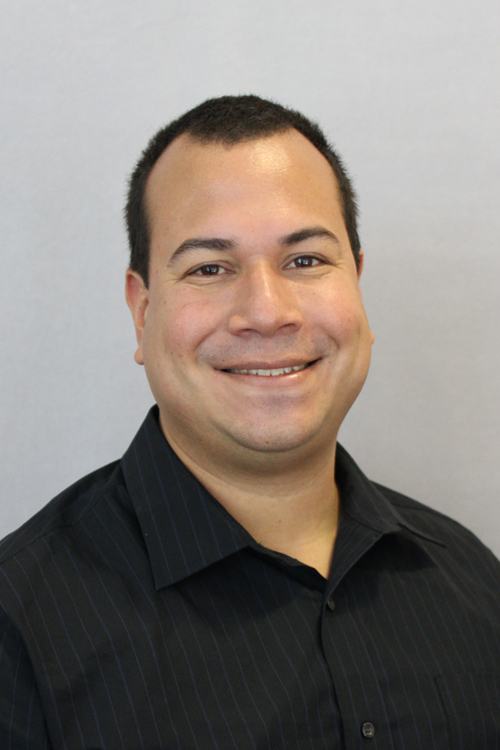Recent News
UNM Engineering team wins ASEE best paper for work on first-year engineering course
July 17, 2025
New director will enhance interdisciplinary engineering learning opportunities
July 2, 2025
Final SIRI cohort visits UNM campus
June 30, 2025
Perfetti receives ANS Landis Engineering Achievement Award
June 26, 2025
News Archives
NSF CAREER recipient to investigate reactivity of uranium mine wastes in Native communities
February 2, 2017 - By Kim Delker
José M. Cerrato, an assistant professor in the Department of Civil Engineering at The University of New Mexico, has received a National Science Foundation (NSF) Faculty Early Career Development (CAREER) award. The project will measure the environmental impact that abandoned uranium mines have had in Native American communities and develop methods to lessen the effects.
Cerrato was awarded a 5-year, $500,000 grant to study "Understanding Reactivity in American Native Impacted Uranium Mines: Research, Education and Outreach."
 His project integrates research, education, and outreach activities to identify the main biogeochemical mechanisms affecting the contamination and remediation of metals in organic-rich sediments in abandoned uranium mine wastes in northwest and central New Mexico.
His project integrates research, education, and outreach activities to identify the main biogeochemical mechanisms affecting the contamination and remediation of metals in organic-rich sediments in abandoned uranium mine wastes in northwest and central New Mexico.
The issue goes back a century.
"The way mining was done in the early 1900s was very rudimentary," he said. "When miners were finished, they left everything behind, including uranium, with no way to measure the amount left. On the other hand, there were no regulations, such as how much is too much and what the effects would be on the environment," Cerrato said.
He said the effects of the mining legacy are especially apparent after heavy snowfalls and during the monsoon season, where he and his team have observed heavy concentrations of uranium in soil and vegetation in the path of the drainage. He would like to better understand the reactivity of mine wastes and how the wastes react with water, organic matter, or plants in the area.
"The whole intent from a science perspective is that if we can understand these reactions, we think we can have a better understanding of knowing where the uranium is and understanding how to mitigate it," Cerrato said. "We know very little about interactions of uranium with organic matter. The use of advanced microscopy and spectroscopy to better understand these interactions is a central part of this project."
Cerrato became familiar with the issue of uranium in abandoned mines while he was a postdoctoral researcher at Washington University in St. Louis working in Rifle, Colo., on a project sponsored by the Department of Energy. He has also worked in native communities of his home country, Honduras.
He said this NSF project combines both science with social and cultural aspects.
"The beauty of it, and what really inspires me, is the opportunity to work with Native American communities. It requires a lot of social components to work collaboratively with the tribes to do the research," he said.
Cerrato said he has worked closely with the tribes since they know the land and where the mining operations once were located. The education and outreach work will be done in collaboration with the Southwest Research and Information Center and the New Mexico Museum of Natural History and Science.
The project also includes a significant outreach component, where Cerrato and his team will work with the Southwestern Indian Polytechnic Institute in creating an environmental science program at the school.
"This project naturally merges research, education, and outreach, and I can immediately see the impact of the science on a problem that is extremely important not only to New Mexico but to the world," Cerrato said.
Cerrato credits a culture of collaboration at UNM for the success of his work. He has worked closely with the UNM Health Sciences Center, the Department of Chemical and Biological Engineering, and the Center for Water and the Environment, in addition to other universities, including Stanford University and the University of Iowa.
"I've been extremely fortunate that I have all these resources at the university as a junior faculty member," said Cerrato, who came to UNM in the fall of 2013. "In a relatively short time, we've been able to publish a lot of work in top journals. I think the University of New Mexico is well-positioned to be a world leader in this area."
Cerrato is looking forward to what this project will mean both for his area of research and to him personally.
"It's been great that the university has not only allowed me to set my roots here, but also to expand those roots to other places. I feel very happy about that," he said. "I'm very excited about the future."
The NSF CAREER program helps early-career faculty get strong starts on their academic careers. The award is NSF's most prestigious award in support of junior faculty who exemplify the role of teacher-scholars through outstanding research, excellent education, and the integration of education and research within the community.
